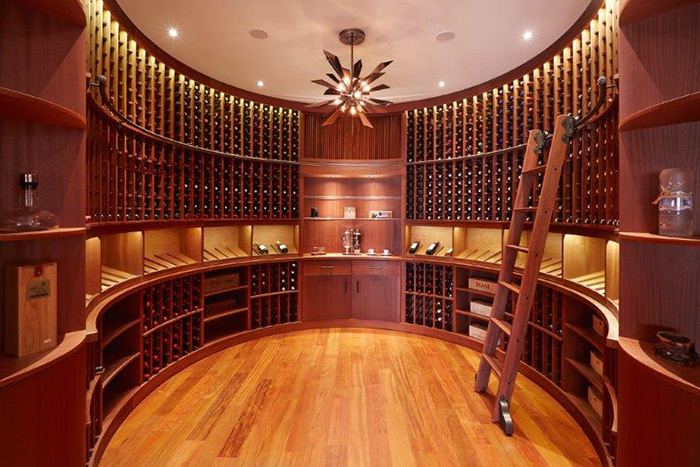Wine Stellar: Create the Perfect East End Wine Cellar

It all begins with one bottle of wine. Perhaps that first sip of a new find or a familiar favorite begets the purchase of a case or two. Suddenly there’s a collection that needs to be properly kept. For wine collectors and oenophiles, especially here on the East End, a wine cellar is the ideal addition to any home.
Fine Wine Storage
The first and most important factor for any wine cellar, or wine storage unit for that matter, is creating the ideal conditions.
“If you dig down three to four feet in the ground you get the perfect conditions for storing wine,” says Peter Cimino of North Fork Wine Cellars, who explains that while the design is “anything the customer wants,” the ideal temperature is “55 to 57 degrees” and “between 68% and 70% humidity. Further, he says, “If you think long-term storage you need proper refrigeration and humidity so you can store it for 30 years or more.”

Growing Collections
Modern materials and technology provide today’s oenophiles every opportunity to stretch their imagination. “There’s been an uptick in clients wanting larger cellars, something that can hold 2,000 or more bottles,” Cimino says. A basic wine cellar can hold 800–1,200 bottles and has a price tag of about $40,000. But Cimino’s also built wine cellars that can hold upwards of 8,500 bottles of wine for about $250,000. Given the size of the mega-mansions and estates in the Hamptons, it’s not hard to imagine a wine cellar with over 8,000 bottles.
Two main factors that determine the cost are the materials and the cooling system. “When it comes to materials you want hardwoods,” Cimino explains. “You don’t want cedar because for long-term storage you can impart the scent of the wood in the cork, which can ruin the wine. All-heart redwood is the exception. It’s a soft wood but it’s good. Other good materials are maple, walnut and rosewood.”
For the cooling system, there’s a through-the-wall type that’s less expensive. Other options include ducted and split-ducted systems. Regardless of the cooling system, which is typically tucked behind the walls and ceilings, a steady temperature of 55° is ideal.
A Matter of Taste(ing)
Trends run the gamut. “Some clients are looking for a more French-inspired wine cellar. A lot of stone, wood beams, more like what people think of as a traditional cellar. But a more contemporary look is popular now with wine cellar design,” says Cimino, who also adds cigar humidors in many projects to take advantage of the perfect humidity conditions. “Metal racking and a display so you can see the labels instead of the ends of the bottles are also popular.”
Cimino says, “The customer breaks down into three basic groups: One, they’re just looking for storage. Nice racking, nice look and proper environment. Then you have people who want to do something like a tasting table where they can bring some friends down to the wine cellar. But people don’t realize the temperature down there is 55 degrees.”
For those clients, installing plate glass windows through which the wine collection can be viewed, and then building a tasting room or antechamber outside the wine cellar, is the way to go. “We build adjoining rooms with tables and racking for storage and for special finished bottles. We put in windows so you can see the actual cellars.”
And then there’s the third kind of customer, the “diehards.” Cimino says, “They say, ‘This is what a wine cellar is for,’ and don’t care how cold it is.”

High-Tech Tracking
“Over the last few years a tremendous amount of wine programs have come out that clients can use to track and control their wine cellars. It can be as simple as inputting the year and name of the wine and the number of bottles you have, all the way to using a bar code system that can tell you when certain wines are at their peak and should be opened,” Cimino says.
If you’re short on space and prefer a low-tech option, our expert suggests the EuroCave that holds about 200 bottles, as well as units from Sub-Zero, Viking and U-Line all made to match stainless kitchen appliances that hold anywhere from 24–100 bottles.
To mark a milestone, or to round out a delicious meal, a glass of wine has been the choice across the globe for a few millennia “A wine cellar can be basic storage or it could be elaborate,” Cimino says. “My best advice is not to build a wine cellar for the collection you have right now. As soon as you have a wine cellar you’ll buy more.”



